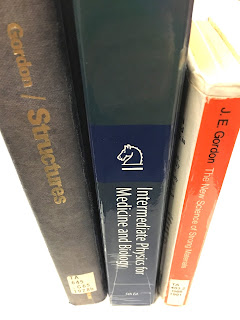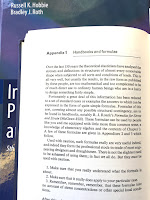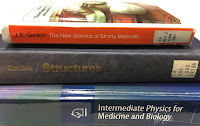A hospital is a rich environment for a lover of physics applied to medicine. One thing that particularly caught my eye is their way of measuring blood pressure. I got interested when, after a cuff was inflated around my arm, instead of feeling the familiar slow steady release of pressure as the nurse listened to my arm (that’s the way they still do it at the blood drive), this cuff started gripping and ungripping my arm in a strange and almost belligerent way. I had several opportunities to observe the measurement of blood pressure, and I decided that it would be a good topic for this blog.
First, a bit about the basic physics and physiology. In Chapter 1 of the 4th edition of Intermediate Physics for Medicine and Biology, Russ Hobbie and I write
As the heart beats, the pressure in the blood leaving the heart rises and falls. The maximum pressure during the cardiac cycle is the systolic pressure. The minimum is the diastolic pressure. (A blood pressure reading is in the form systolic/diastolic, measured in torr.)
 |
| The Human Body, by Isaac Asimov. |
When blood is forced into the aorta, it exerts a pressure against the walls that is referred to as blood pressure. This pressure is measured by a device called a sphygmomanometer (sfig’ moh-ma-nom’ i-ter; “to measure the pressure of the pulse” [Greek]), an instrument which, next to the stethoscope, is surely the darling of the general practitioner. The sphygmomanometer consists of a flat rubber bag some 5 inches wide and 8 inches long. This is kept in a cloth bag that can be wrapped snugly about the upper arm, just over the elbow. The interior of the rubber bag is pumped up with air by means of a little rubber bulb fitted with a one-way valve. As the bag is pumped up, the pressure within it increases and that pressure is measured by a small mercury manometer to which the interior of the bag is connected by a second tube.What I experienced in the hospital was different than Asimov’s explanation, and was more automated. I’m having a difficult time finding good technical literature about automated blood pressure monitors, but I’m going out on a limb here and guess how they work. In the hospital there was an inflatable cuff around my forearm, but there was no one listening with a stethoscope. That person is replaced by an optical device (similar to a pulse oximeter, see Section 14.6, Biological Applications of Infrared Scattering, in Intermediate Physics for Medicine and Biology) clipped to my finger, which presumably can detect flow. The cuff then inflates and flow is measured, the cuff changes the pressure to a new level and flow is measured again, etc. This all happens rapidly; each new cuff pressure level was maintained for at most one second, implying that only a single heart beat sufficed to make the flow measurement. The cuff and optical device are attached to a computer, and the computer made the decision about when to increase or decrease pressure, and what values to use. It seemed to be doing some sort of binary search, first going above and then below the level that allows flow. The algorithm slowed as the threshold level was approached, and I suspect that in such cases several heartbeats were required to accurately determine if flow occurred. The device also output the pulse rate and, if my memory serves me well, blood oxygenation level. Both were recorded after the cuff had completed its measurement of blood pressure.
As the bag is pumped up, the arm is compressed until, at a certain point, the pressure of the bag against the arm equals the blood pressure. At that point, the main artery of the arm is pinched closed and the pulse in the lower arm (where the physician is listening with a stethoscope) ceases.
Now air is allowed to escape from the bag and, as it does so, the level of mercury in the manometer begins to fall and blood begins to make its way through the gradually opening artery. The person measuring the blood pressure can hear the first weak beats and the reading of the manometer at that point is the systolic pressure, for those first beats can be heard only during systole, when the blood pressure is highest. As the air continues to escape and the mercury level to fall, there comes a characteristic quality of the beat that indicates the diastolic pressure; the pressure when the heart is relaxed.
I like this method. It does not depend on someone carefully listening for delicate blood flow noises (also known as Korotkoff sounds). In fact, while the blood pressure was being measured, the nurse was usually checking my IV line or doing some other task; the method is truly automated. One time, I did a little experiment and fidgeted with the finger clip during the measurement. The nurse got a fright when she saw my blood pressure up around 220/150. But a quick repeat measurement (during which I behaved myself) revealed that my blood pressure was actually normal (about 110/70). I suspect that the use of the binary search and pulse oximeter provides a more accurate measurement than does the traditional method, although I have no evidence to support that opinion. Automated blood pressure recording is an excellent example of how physics and engineering can contribute to medicine and biology.









